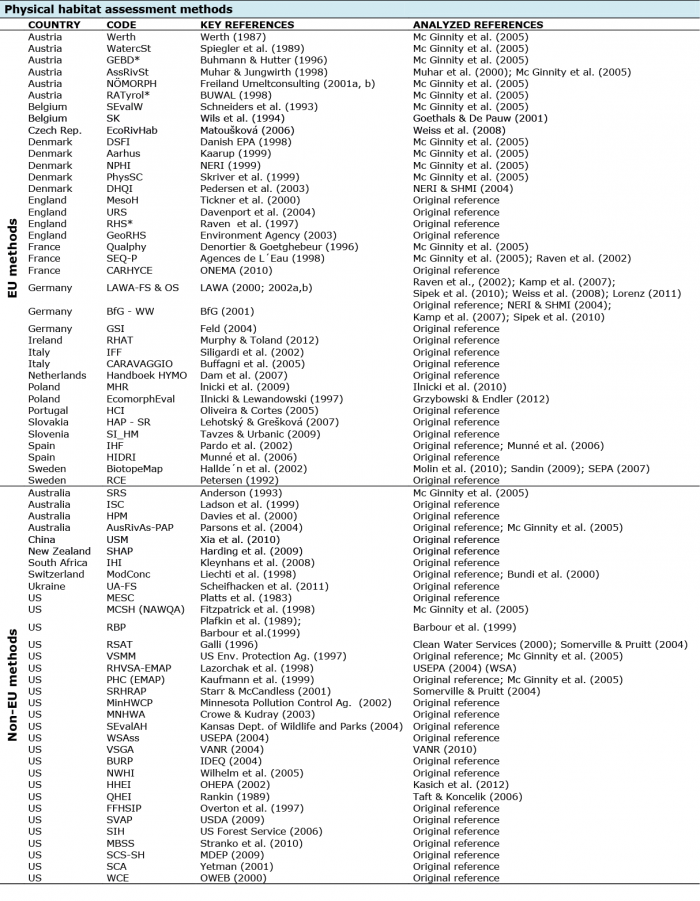Difference between revisions of "Physical habitat assessment"
m (→Other relevant information) |
m (→Other relevant information) |
||
| Line 24: | Line 24: | ||
| − | + | [[File:TableRef1.png|center|thumb|700px| Table 1. Analyzed references for methods of phisical habitat assessment.]] | |
| − | + | ||
| − | [[File:TableRef1.png|center|thumb|700px| Table 1. Analyzed references for methods of phisical habitat assessment. | + | |
| − | ]] | + | |
[[Category:Tools]][[Category:Hydromorphological assessment methods]] | [[Category:Tools]][[Category:Hydromorphological assessment methods]] | ||
Revision as of 18:20, 8 February 2013
Physical habitat assessment
Type
Hydromorphological assessment methods
Brief description
Physical habitat assessment methods aim to identify, survey and assess physical habitats and/or the overall functioning and conditions of rivers and streams. They are mainly applied at a local/reach scale, consider all the spatial components of a river corridor (channel, riparian area and floodplain), and assess the hydromorphological state at present time. We reviewed 72 methods belonging to this broad category (39 for European countries and 33 for non-European countries) (Table 1).
Strengths, limitation and gaps
Methods of physical habitat assessment aim to characterize the range of physical habitats, heterogeneity and structure of ecosystems. These methods have often a great ecological relevance. The main limitation is that these methods are not suitable to understand physical processes and causes of river alterations, because of a series of reasons, including the scale of investigation (too small), the survey resolution (too much accurate), the temporal scale (not taken into account), the variability of river systems (not covered).
Other relevant information
Summary tables of analyzed physical habitat assessement methods are available here:
- For European countries: File:1 EU.pdf
- For non European countries: File:1 nonEU.pdf
Table 1 lists key and analyzed references for methods of phisical habitat assessment.
